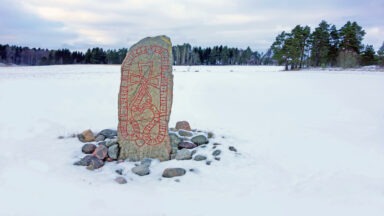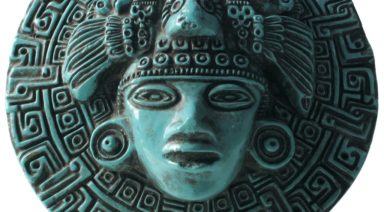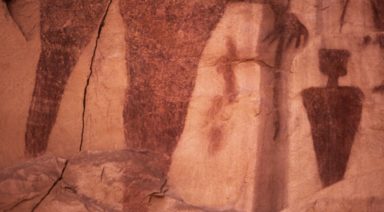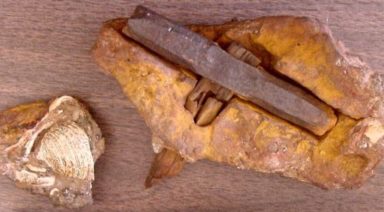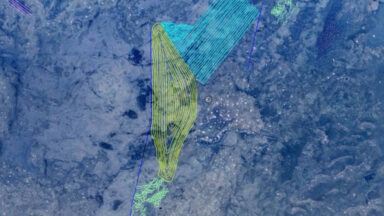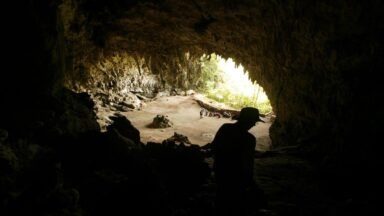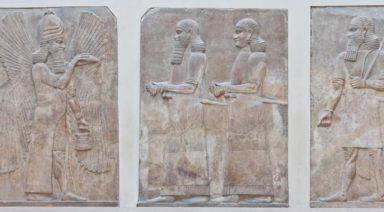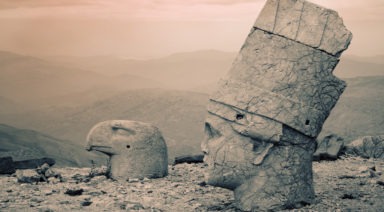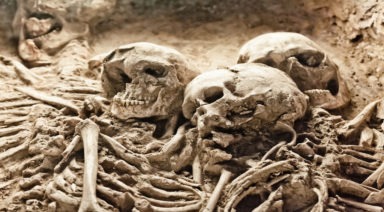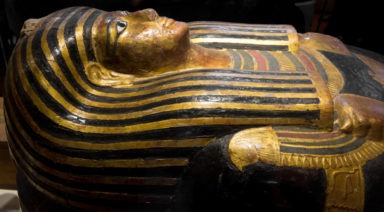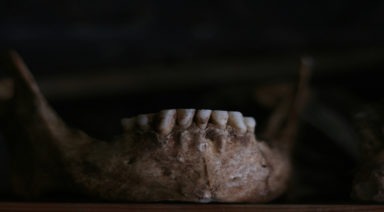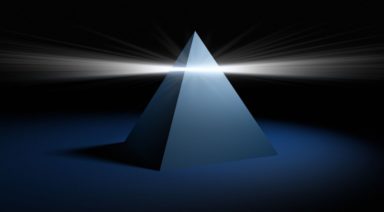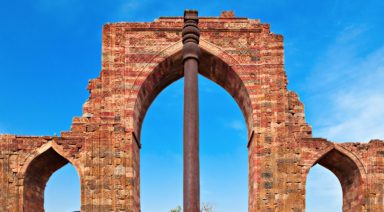Has the City of Atlantis Been Discovered in the Eye of the Sahara?

If you feel challenged by our relatively unconscious society, you may be one of the many dreamers who fantasizes about the lost city of Atlantis. Some believe the Eye of the Sahara in Mauritania holds the secrets we’ve long imagined to be true. Stretching 14.6 miles across, the Eye appears to be from another world. Considering Plato’s writings on the subject, it’s possible that this incredible structure is the final resting place of millions of Atlanteans.
While Plato’s descriptions of Atlantis are epic and mind-blowing, many believe he barely scratched the surface. He described Atlantis as a massive formation of concentric circles, alternating between land and water, similar to how the Eye is seen today. He emphasized that Atlantis was a wealthy, utopian civilization that created the basis for the Athenian democratic model. Plato went on to describe the land as rich in gold, silver, copper, other precious metals, and gemstones.
According to Plato, the story of Atlantis, first told by the ancient Egyptians, has all the elements you’d expect from a culture that was not only ahead of its time, but also wildly arrogant. Atlantis was a leader in academia, architecture, agriculture, technology, diversity, and spiritual empowerment, their navy and military were unmatched, and the Atlantean kings ruled with extreme authority. It’s no surprise that Atlantis fell in ways similar to Rome, and potentially in a similar way to how the United States could fall.
“This power came forth out of the Atlantic Ocean … an island larger than Libya and Asia put together … Now in this island of Atlantis, there was a great and wonderful empire which had rule over the whole island and several others, and over parts of the continent.”
― Plato, Timaeus/Critias
Soon after waging an aggressive, unprovoked war on parts of Asia, the Atlanteans were defeated by the only army willing to defend the continent: the Athenians. Amidst the battles, the Gods thrust violent tsunamis, earthquakes, tornados, hurricanes, and floods upon the Empire of Atlantis. As if admitting its sins, Atlantis burst apart, dissolved into the ocean and desert, and was never seen again.
The Eye of the Sahara, also known as the “Richat Structure” and “Eye of Africa” is located in the Sahara’s Adrar Plateau in Mauritania, the Islamic Republic in Northwest Africa. This massive geologic, inverse dome contains rocks and sediment dating back to a time before life on Earth.
Visible from space, the Eye of Sahara resembles a massive bullseye, which began to form when the supercontinent Pangaea broke apart. The igneous rocks embedded in the Eye include carbonates and black basalts akin to Hawaii’s Big Island.
The Richat Structure and Atlantis
Many believe Plato’s stories about Atlantis were parables and that he used Atlantis to set the stage for his ideology. Plato’s Atlantean narrative might be in the same vein as James Cameron’s Avatar, in which he warns us that corporate greed and racism can quickly pollute and potentially destroy our civilization.
King Atlas, aka King of Atlantis, and namer of the Atlantic Ocean is the same person as Atlas of Mauritania. Herodotus’s map from 450 BC places Atlantis in the same place as the Eye. The Egyptians, the first tellers of the Atlantis story, were colonized by Atlantis. It’s through their lineages that we came to learn about Atlantis and its precise location.
The circular isle of Atlantis was described to have a diameter of 127 Stadia. 1 Stadia = 607 feet. When you multiply 127 x 607, the result is 77,089 ft. This is equivalent to around 14.6 miles – the diameter of the Eye.
More Similarities Between Atlantis and the Eye of the Sahara
– Solon, Plato’s relative, was an Athenian statesman and poet who traveled to Egypt and learned about Atlantis first-hand. It’s these stories that Solon relayed to Plato.
— In Plato’s Critias and Timaeus dialogues, he describes Atlantis as three alternating zones of water and two of land, which could easily be transposed onto the physical structure of the Eye that we know today.
— The nearby mountains were seen as representatives of the Gods and celebrated for their lush rivers and waterfalls. These mountains were said to be in the North, the precise location of the Eye’s mountains. When you look at the satellite images of the Eye, you can see the river and water lines that appear throughout the landscape.
— Plato described the sea to the South of Atlantis and the desert surrounding the area, which also appears in satellite images.
–It was said the fresh water flowed from the center island of Atlantis, which also exists in the center circle of the Eye.
— Satellite imagery shows that weather pushed mud across the region, which could easily be attributed to a tsunami, one of the many aspects of the weather system that simultaneously destroyed Atlantis.
— Mauritania exports copper and gold, which were plentiful throughout the Empire of Atlantis.

Eye of Sahara from space
— Plato reported that elephants, and many other animals, were abundant on Atlantis — many elephant bones have been found near the Eye.
— Black, red and lighter colored rocks were reported to be embedded throughout the land of Atlantis. This is also true of the Eye.
— There have been thousands of artifacts found in and around the Richat Structure. Most are 12,000 years and older, which puts them in the time frame of Atlantis. These items include arrowheads, spears, stone spheres, surfboards, oars, ship hulls, and more.
Legend tells us that Atlantis was an empire made of ten kingdoms, with the island of Atlantis as the capital. The God Poseidon gave birth to five sets of twins, ten children in total, each one running one of the ten kingdoms. Having twins is a rare occurrence. It just so happens that the highest birth rate of twins on planet Earth is found in Nigeria – very close to Mauritania.
Plato and Solon were known to have integrity and were therefore rarely challenged. Atlantis is the only story of Plato’s that was ever disputed.
One of the strangest aspects of the history of Atlantis is that none of these theories are presented in Wikipedia, and every related page is locked. This includes pages about the Eye, King Atlas, and the God Poseidon. How is it that the universally accepted concept that Atlantis existed is left out of one of society’s most treasured resources?
If you’re still on the fence about the Eye of the Sahara being the location of the city of Atlantis, consider that the City of Troy was thought to be a myth for thousands of years, until it was found, exactly where Homer said it would be.
“There were a great number of elephants in the island, and there was provision for animals of every kind, both for those who live in lakes and marshes and rivers, and also for those who live in the mountains and on the plains, and therefore for the animal which is the largest and most voracious of them.”
― Plato, Timaeus/Critias
The Transformational Power of the Viking's Runes
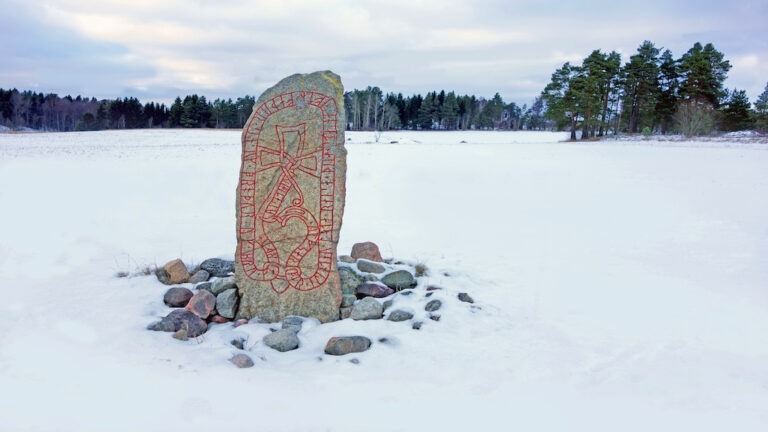
The Birth of Runes
The Viking runes came into being when Odin brought them forth from another world. Historians from the National Museum of Denmark explain that Odin ruled over Asgard, which contains Valhalla, “the hall of the slain.” Half the warriors who died in battle were collected by his female handmaidens, the valkyries, who belonged to him. As such, Odin was the object of worship by kings, warrior chieftains, and their people.
In a mythic Viking tale, Odin wounds himself with his own spear before hanging himself from the Yggdrasil—the world tree in Norse culture—for nine nights, drawing wisdom from the Depths of Urd, just below it. From there, Odin sees the runes that existed even before his own coming into being, “a time before time.”
Just as he’s about to die, Odin gathers up the runes and shares them with all of creation and an array of supernatural entities and human beings. Eventually, the runes were given their shapes and phonetic values by subsequent tribal elders. They were carved on weapons, tools, jewelry, amulets, bones, pieces of wood, memorial stones, church walls, and other hard surfaces.
Ancient peoples of the Germanic lands knew the runes to be beyond the time and space with which most people are familiar. Some experts suggest that they were never really “invented,” but are instead eternal, pre-existent forces that Odin discovered through his aforementioned superhuman ordeal.
Historians have linked the runes to areas with a history of Germanic-speaking peoples, including from Iceland to Scandinavia, throughout England, and into Central Europe. Even Constantinople is home to the runes, showing that ancient seafaring cultures had made their way into what is now modern-day Turkey.
Reading the Runes
We may use the metaphor of a tree to assess how the runes are read. Historian Emma Groeneveld noted that “they are generally made up of vertical lines — one or more — with ‘branches’ or ‘twigs’ jutting out diagonally (and very occasionally horizontally) upwards, downwards or in a curve from them. They can be written both from left to right and from right to left, with asymmetrical characters being flipped depending on the direction of writing.
Each rune represents a phoneme (a speech sound) and had a name, made up of a noun, that started (and in one case, ended) with the sound the rune was mainly associated with. Lots of regional and temporal variation existed in the shapes of the letters.”
Experts of Norse mythology explain that, on the surface, runes seem to be letters. However, they are much more, because each one is a symbol of a cosmological principle or power. The very act of writing a rune called upon unseen spiritual forces. In every Germanic language, wrote historian Daniel McCoy, the word rune comes from the Proto-Germanic word that means both “letter” and “mystery.”
The Eternal Magic of the Runes
The runes have been used to link the natural and supernatural worlds, and this gives them the power to enact spells for protection or success. Still, said Olsen in an exclusive Gaia interview, according to archaeological and historical evidence, runes were used as magical tools for healing, transformation, building wealth, and for making the world a better place.
The power of the runes is in their sound vibrations, teaches Olsen. Each runic character represents a letter so that it can be combined with others to form words. The runes are also magical symbols, and each character has its own name and symbolic meaning.
Norwegian historian Marit Synnøve Vea explained that runes are not limited to their carved signs, but are also applied in certain songs, magical formulas, secret skills, and for secrets hidden in Skaldic (Old Norse) poetry. Vea noted that runic magic was used to foretell the future, as a form of protection, to cast spells, to cure illness, to bestow love, and much more.
But where there is power, there is a warning. In the wrong hands and minds, runes carved by unskilled persons could represent risky business. Vea cites a poem from the Old Norse Egil Saga that serves as an ancient warning for the modern generation:
Runes none should grave ever
Who knows not to read them;
Of dark spell full many
The meaning may miss.
Ten spell-words writ wrongly
On whale-bone were graven:
Whence to leek-tending maiden,
Long sorrow and pain
The history of the runes is the history of timelessness, a paradox among paradoxes. Often regarded as tools for parlor games, serious historians have found the deeper meaning in ways the runes can be read and applied for the betterment of life on this planet and the invisible worlds.



